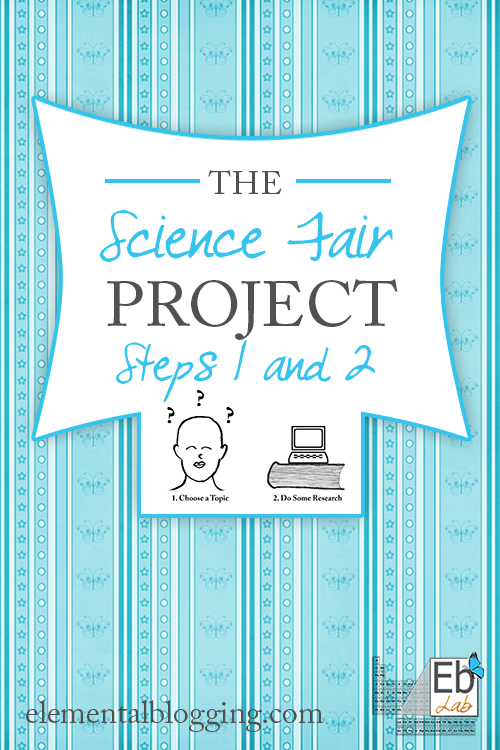 Last week I shared why it is so important for us, as homeschoolers, to do a science fair project.
Last week I shared why it is so important for us, as homeschoolers, to do a science fair project.
This week, I want to kick of a week long series that will take a brief look at the steps of the science fair project. My hope is that by the end of the week you will have a better idea of how to guide your student through this process.
Let’s begin with a look at Step 1: Choose a Topic and Step 2: Do Some Research.
Step 1: Choose a Topic
The first step of the science fair project is to choose a topic for the project. This phase is patterned after the first step of the scientific method, which is to “Ask a Question”.
The first step of the scientific method begins when the scientist observes an occurrence that makes him wonder what is happening. Then, he creates a question that relates to what originally peaked his interest. When crafting the inquiry, the scientist will make sure that the question is worded in such a way that he will be able to measure whether or not he has obtained the answer.
For the science fair project, there are three keys to choosing a topic
- The students need to decided what area of science interests them.
- The students develop several questions about this area of science that they wish to answer.
- Finally, the students choose one of the questions to be the topic for their project.
Once the students decide on their topic, they can move onto doing some research.
Step 2: Do Some Research
The second step of the science fair project is to do some research. This phase is patterned after step 2 of the scientific method.
In this step, the scientist researches the topics that correlate with his question so that he will have some background knowledge about the subject. This information will give him a basis for formulating his hypothesis. The scientist also does research to keep from repeating previously done work and to learn from past trials or errors.
For the science fair project, the research the students do will enable them to make an educated guess at the answer to their question. For their research, the students need to:
- Brainstorm for categories that are relevant to their topical question.
- Research and learn about these categories through their personal library, through the Internet, and their local library.
- Organize the information they have found
- Write a brief report.
Now that the students have a topic and have learned more about the subject, they are ready to formulate a hypothesis. Tomorrow, I’ll share more about how to do that and how to design and experiment that will test that educated guess.

Have you missed a step? Here’s the links to all of the posts in this series:
- Day 1: Step 1: Choose a Topic & Step 2: Do Some Research
- Day 2: Step 3: Formulate a Hypothesis & Step 4: Design an Experiment
- Day 3: Step 5: Perform the Experiment & Step 6: Analyze the Data
- Day 4: Step 7: Create a Board & Step 8: Give a Presentation
- Day 5: Planning a Homeschool Science Fair (Guest Post by Marci @ The Homeschool Scientist)
 Do you want pages for your students as you guide them through their science fair project? Then check out our step by step guide: The Science Fair Project: A Step by Step Guide!This book is designed to give you the tools you need to guide your students as they complete a science fair project. The first part of the book explains the keys to each step in greater detail than the above post, including a sample project where you will see each of the keys in action. The second half of the book contains sheets for you to use with your students as they proceed through their project.
Do you want pages for your students as you guide them through their science fair project? Then check out our step by step guide: The Science Fair Project: A Step by Step Guide!This book is designed to give you the tools you need to guide your students as they complete a science fair project. The first part of the book explains the keys to each step in greater detail than the above post, including a sample project where you will see each of the keys in action. The second half of the book contains sheets for you to use with your students as they proceed through their project.
 Sign up below to receive weekly tips & tools for homeschool science and we'll send you a FREE copy of
Sign up below to receive weekly tips & tools for homeschool science and we'll send you a FREE copy of
[…] we looked at steps one and two of the science fair project. In today’s post, we are going to look closer at step three, in which the students formulate […]